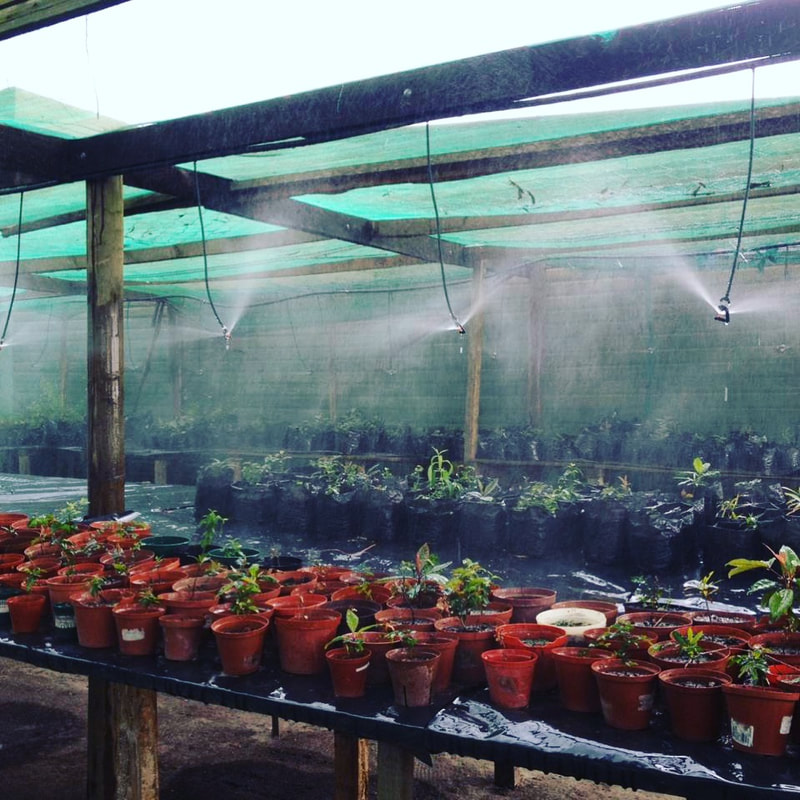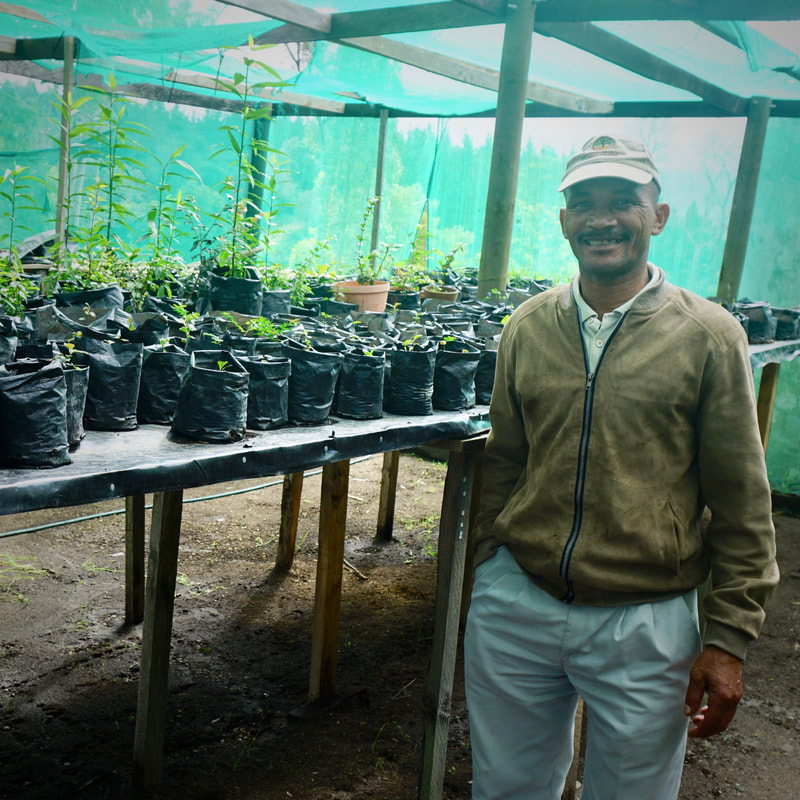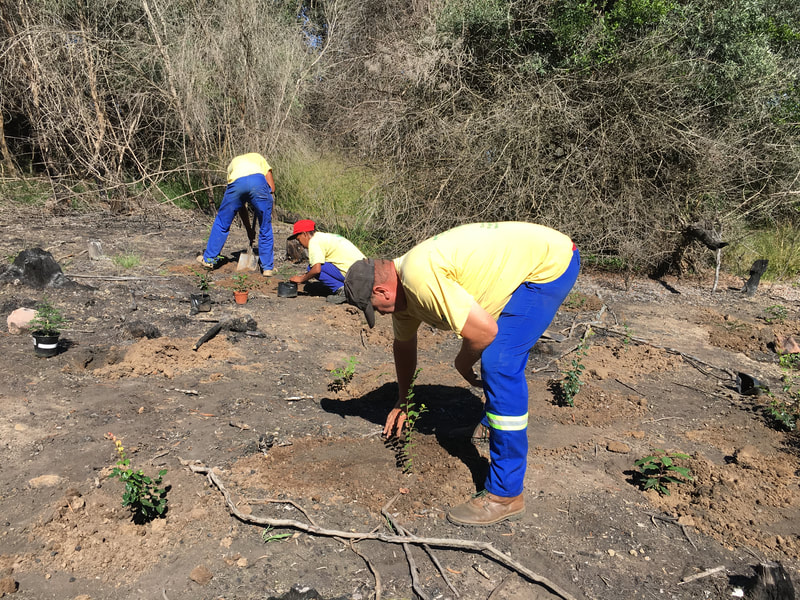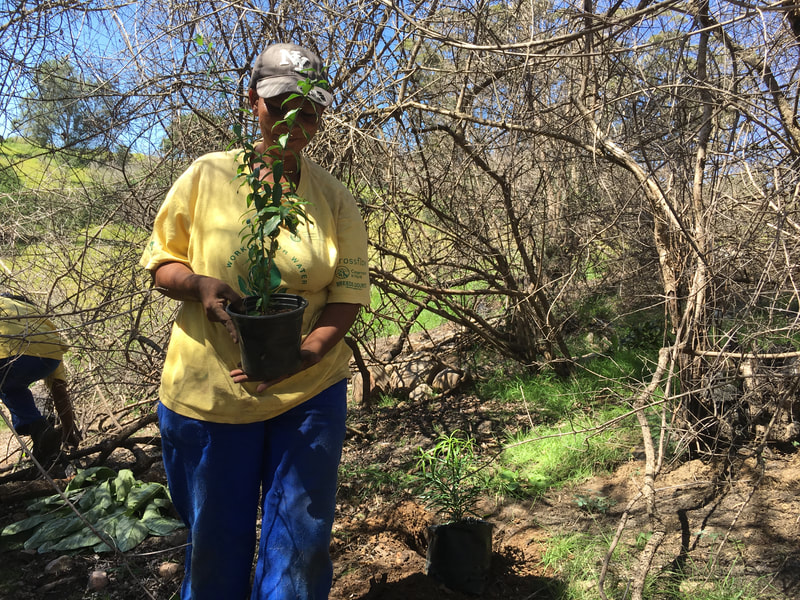|
The Grootvadersbosch Conservancy is home to three different veld types, one of them is the Afromontane forest. Along the Langberg mountain range these patches occur in an array of sizes. Sadly, like much of the vegetation in the Western Cape, these pockets are threatened by invasive plant species and the expansion of human activities, including agriculture. Where the conditions support forest habitat, we try to re-establish forest species that will eventually assist in restoring some of these afromontane forests.
Our rehabilitation includes the use of a nursery where we cultivate seedlings and nurture small indigenous plants. We carefully remove a few small tree seedlings from mature and healthy forests, place them in containers and nurture them until they are mature enough to be planted back in the field. There are around 23 different species in our nursery, all irrigated daily and monitored closely by Twakkie (Goliath Highburg), the manager of our nursery. We asked Twakkie to share some important lessons that he has learnt from his experience with the nursery: A big issue that he has to deal with on a daily basis is the onslaught of the bushbuck. We treasure and adore our bushbuck. Often, we catch glimpses of them moving through our conservancy, and when we are not viewing them in our forests, we are scrolling through plenty of camera trap images of them. However, they are under the impression that any newly planted seedlings have been introduced just for their consumption. Twakkie has found that they will choose to browse on a newly planted tree from the nursery over an older plant of the same species. Much like us, they like new fresh food! The following list are some of the different ways that Twakkie tries to deter them:
While we do plant out seedlings from our nursery, Twakkie has also found that nature is often the best rehabilitator and we can simply help to support this process. Instead of actively planting seedlings from a nursery, it may be best to focus on protecting clusters of adult trees close to a cleared area. Birds or baboons will eat the seeds from these mature trees and disperse the seeds. Over time, the tree species will germinate and the forest will return, naturally. Ensuring that the area remains clear of invasive plants and giving nature a chance to recover may be more effective and less costly than actively trying to propagate and plant out tree seedlings. Twakkie has also been involved in rehabilitation where we maintain a canopy of mature invasive trees that provide a pioneer environment to shelter the young tree seedlings that have naturally germinated. Over time, the indigenous trees become more dominant and the invasive trees are then slowly removed. We are learning new things every day and there is no clear recipe for successful forest rehabilitation. These are just some of his lessons from our area. Comment below on what lessons you have learnt, we are always looking for new and interesting ways to aid our success! Any advice would be appreciated.
0 Comments
Your comment will be posted after it is approved.
Leave a Reply. |
AuthorGVB Conservancy Staff Archives
May 2024
Categories |




 RSS Feed
RSS Feed






